Ernest Thesiger’s
Embroidery



Ernest Thesiger was considered a world-class expert in petit point embroidery. His book Adventures in Embroidery was published by The Studio in 1941, with a revised edition published in 1947.
After his hands were severely wounded in France during WWI, he spearheaded the creation of the Disabled Soldiers’ Embroidery Industry, which provided work at home by which bedridden and shell-shocked veterans could supplement their pensions.
Panel designed and executed by Ernest, from The Studio Yearbook, 1920.
Screen designed and executed by Ernest, from Adventures in Embroidery.
In 1938, Ernest’s work was included in the International Tapestry Exhibition, which traveled the world to several major cities including Sydney, Australia.
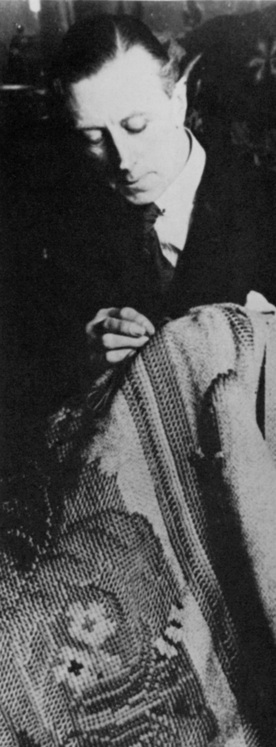
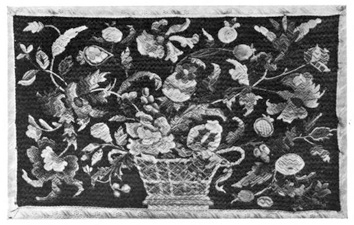
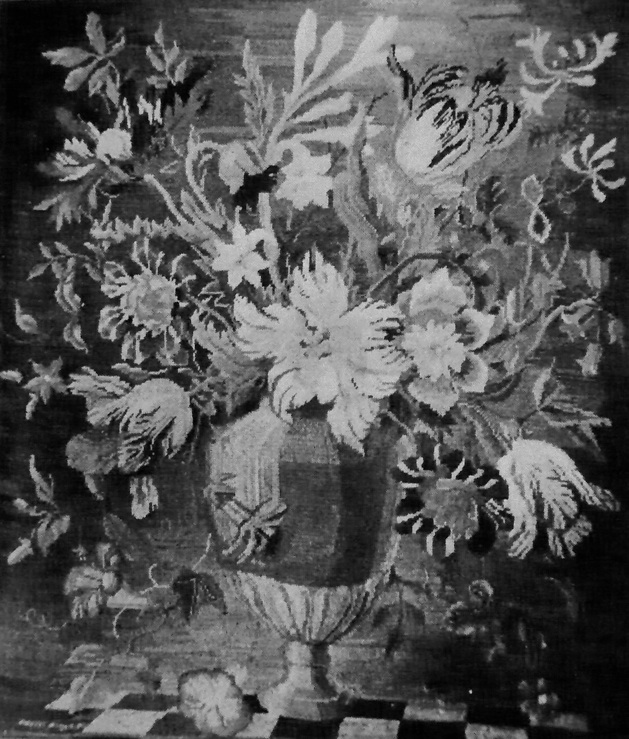
On April 12, 1955 Ernest was featured with his embroidery on the BBC TV program “For Women: Leisure and Pleasure.”
Canton Daily News, October 19, 1924
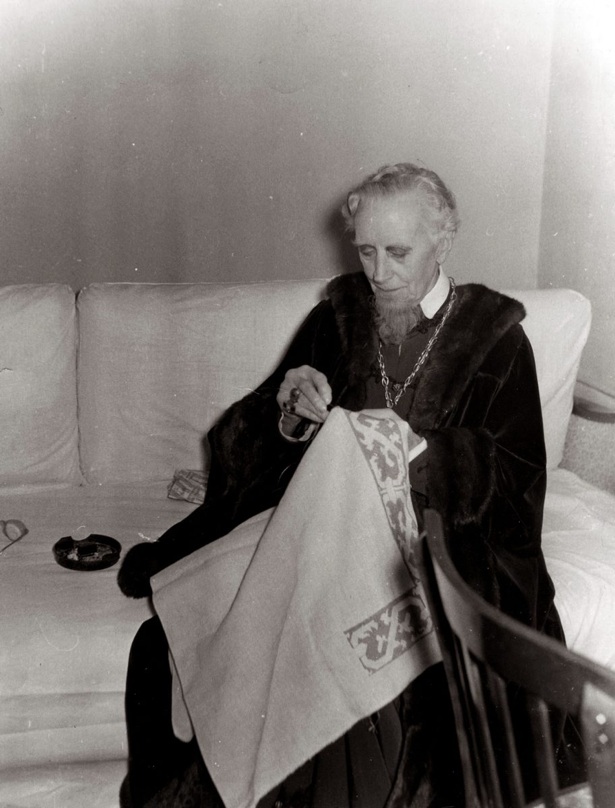
“Many tributes have been paid to Ernest Thesiger for his skill as one of the great actors of this century but his artistic genius spread far beyond the glamour of the stage. Members of the Embroiderers’ Guild are gratefully aware of the constant help he had so willingly given since his election as a Vice-Patron in 1945.
Originally trained as an artist at the Slade School he was able to combine this knowledge with his love of embroidery and in this way he occupied all his spare time. Waiting in his dressing-room at the theatre, in the wings during rehearsals or resting at home, his active mind was ever devising or executing a new piece of work.
Wounded in the First World War he found embroidery a solace during convalescence and at this time started a scheme to teach soldiers in hospital canvas work, designing and commencing each piece himself.
During the years between the wars he experimented with embroidery of every kind, proving his technical ability and good taste, but his preference was for petit point and gros point seeing in these stitches a wider scope for individuality. Miniatures, too, attracted him and he made several tiny carpets for Queen Mary’s Dolls’ House. He also painted scenes that pleased him; two of Chelsea Old Church he presented to the Church and also a drawing of the ruined building made the day after the bombing.
In 1941, his book, Adventures in Embroidery, was published. In this he stressed the importance of creating designs that are both personal and interesting. This book is authoritative and in constant demand from the Guild Library.
Ernest Thesiger gave much time to ecclesiastical work. For Chelsea Old Church he embroidered two kneelers; one of which commemorates the actor Henry Mossop, a Chelsea resident in 1775 and close friend of David Garrick. For this he designed the masks of tragedy and comedy, flambeaux and laurel wreaths symbolising the stage. He also worked one for Henry Patenson, Sir Thomas More’s Jester, “a man of special wit” pictured in the costume of the time with cap and bells.
For Holy Trinity Church, Kensington Gore, where he was a constant communicant, he recently embroidered a large wall-hanging depicting the Garden of Gethsemane, a reverent and moving interpretation conveying his own deep faith.
In his 81st year he completed a large rug for his home, the colouring of which he had planned with the Metropolitan Museum in New York and only a week before his death he finished restoring some badly torn 18th Century chair seats for the Temple Museum in Leeds.
Ernest Thesiger’s life was one of prodigious work. His talents were so many and so varied that we recall them with amazement. It is not, however, only for these that we honour his memory. The charm of his personality made it a privilege to know him and contact with his fine intellect was an inspiration.”
Marie Worsley, Embroidery: The Journal of the Embroiderers’ Guild, Spring 1961

Canvas work cushion designed and executed by Ernest.
Ernest as Polonius in “Hamlet,” 1955. Photo: The University of Bristol Theatre Collection/ArenaPAL
“...there is no occupation in the world so absorbing as trying to paint. Everything, every worry, is for the moment forgotten in the effort, however unsuccessful, of creating a masterpiece. To the surprise of many and the horror of some, I have also found great pleasure in needlework, which, after all, is only another way of making pictures.”
Ernest Thesiger, from his unpublished memoir, I Was.
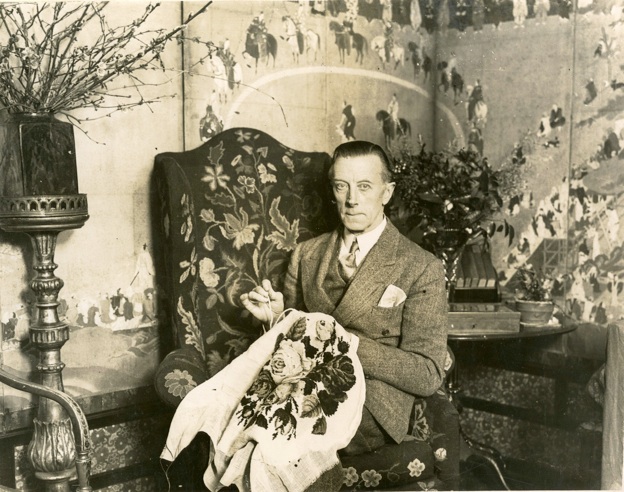
Ernest at home seated in a chair which he upholstered with his own embroidery, 1930s. Photo: University of Bristol/ArenaPal
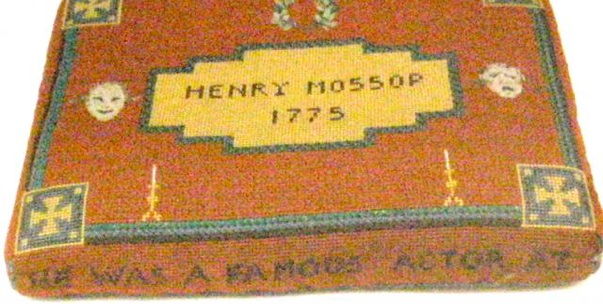
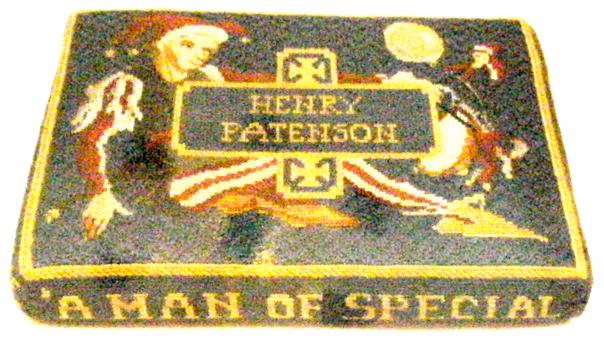
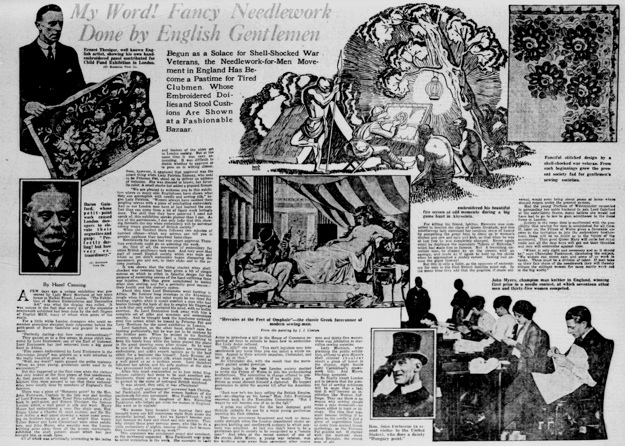
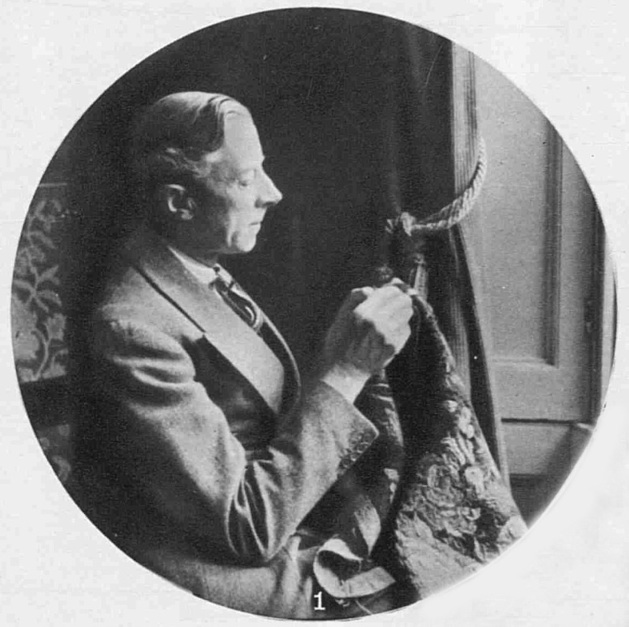
The Sketch, February 21, 1934
The Graphic, June 8, 1929
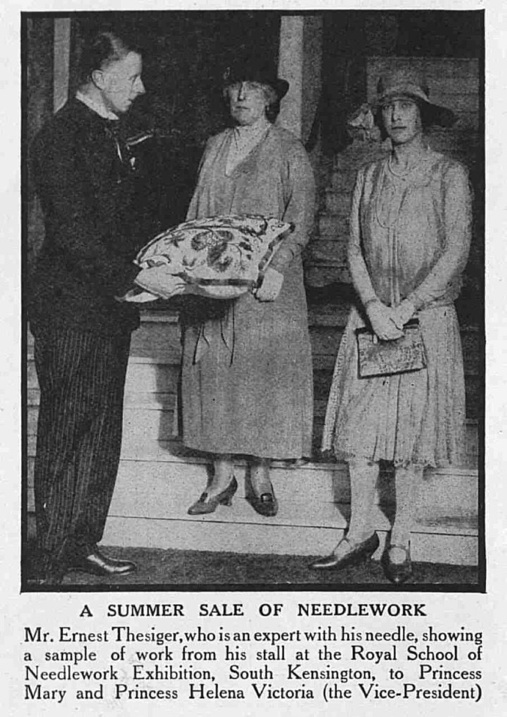
The Yorkshire Post and Leeds Mercury, June 7, 1955 (contains error - "20 years ago" should be "50 years ago")

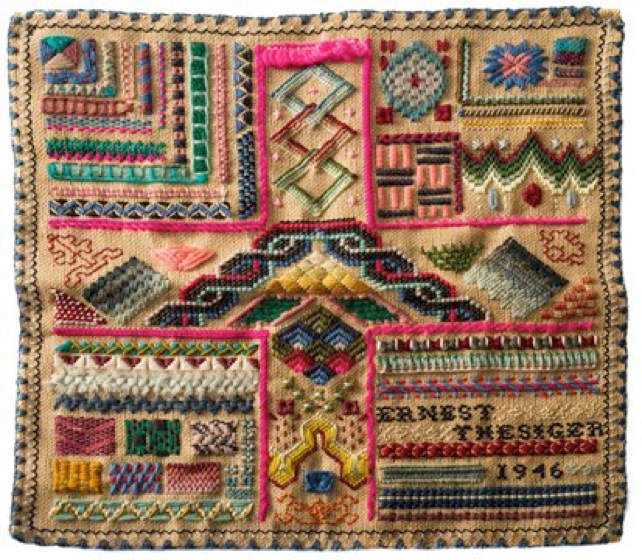
Sampler, 1946


